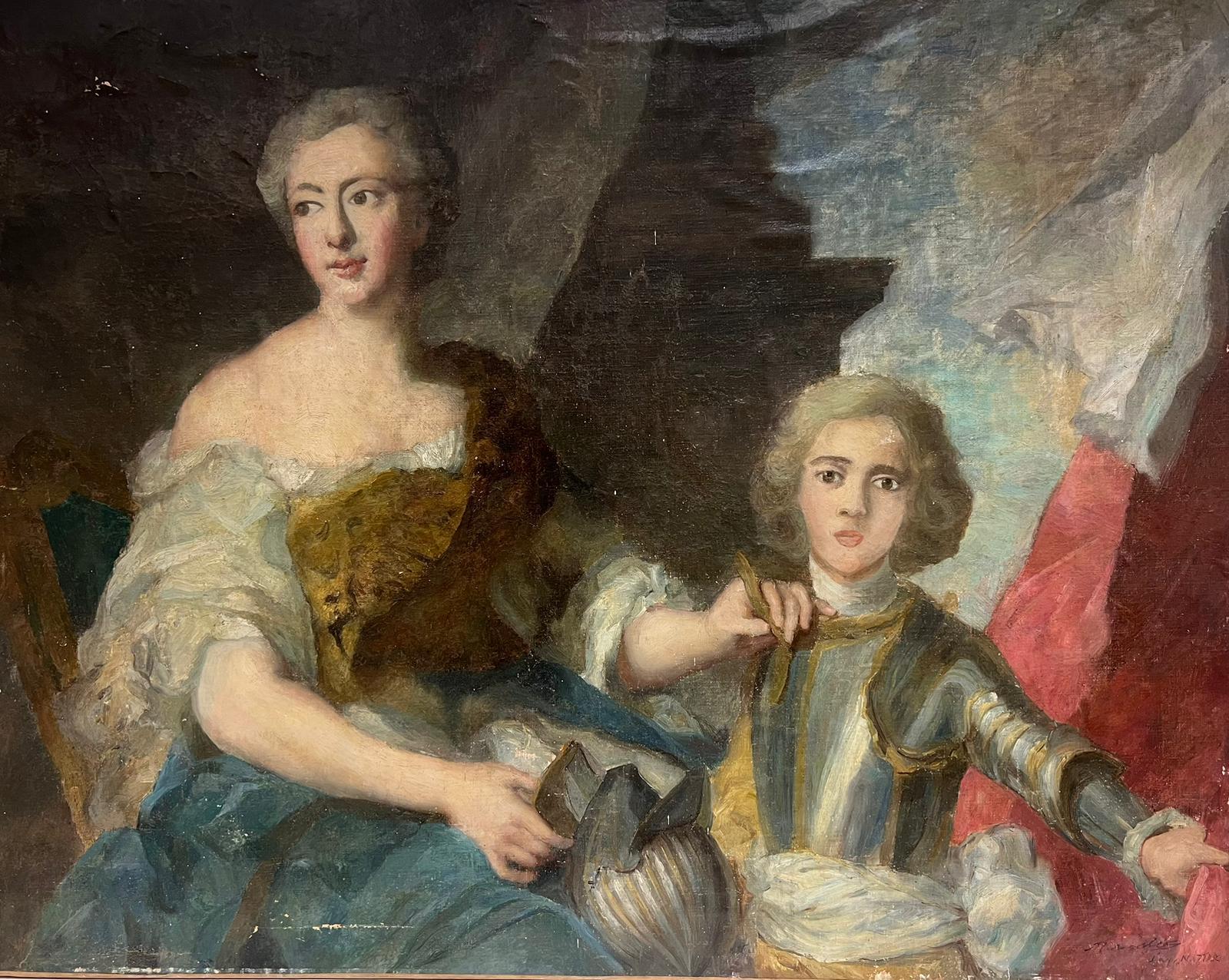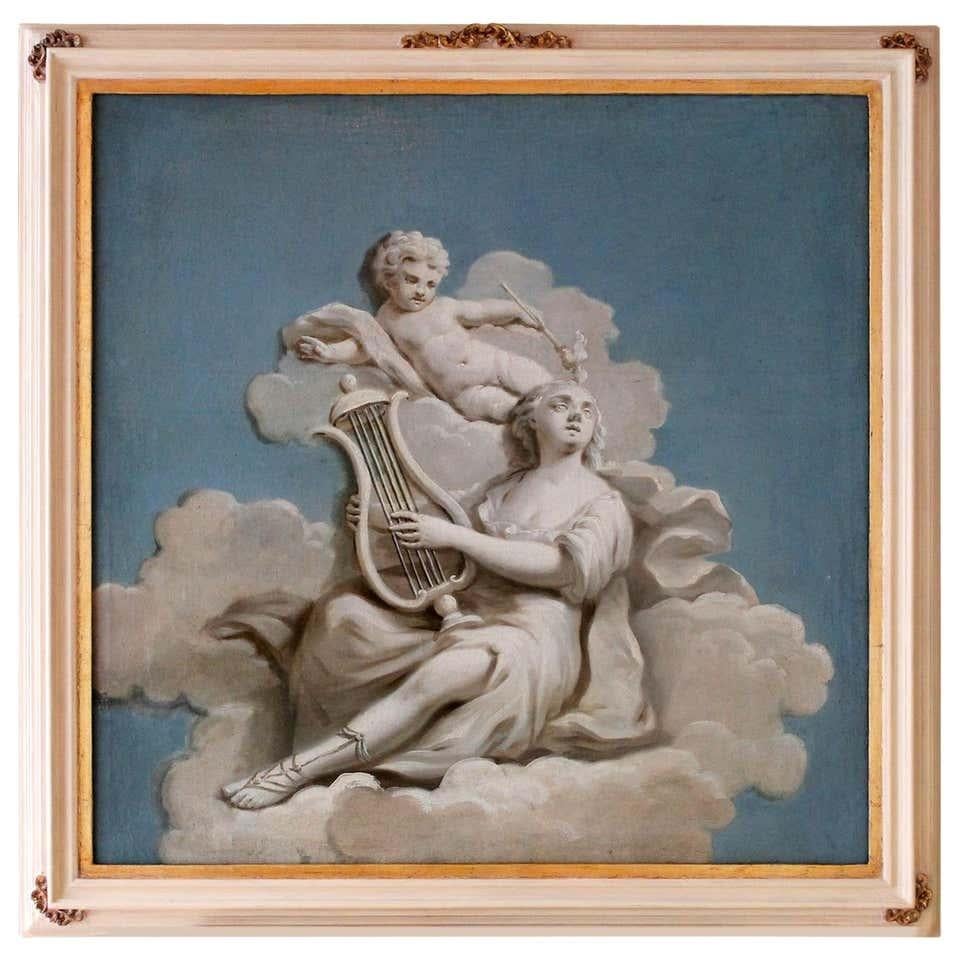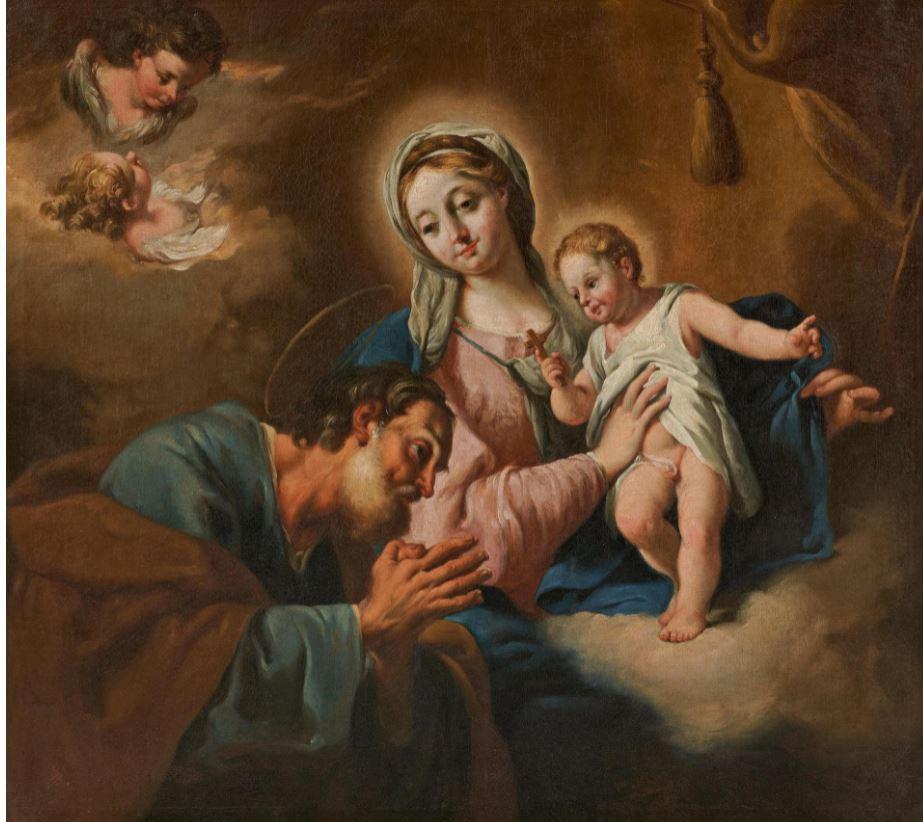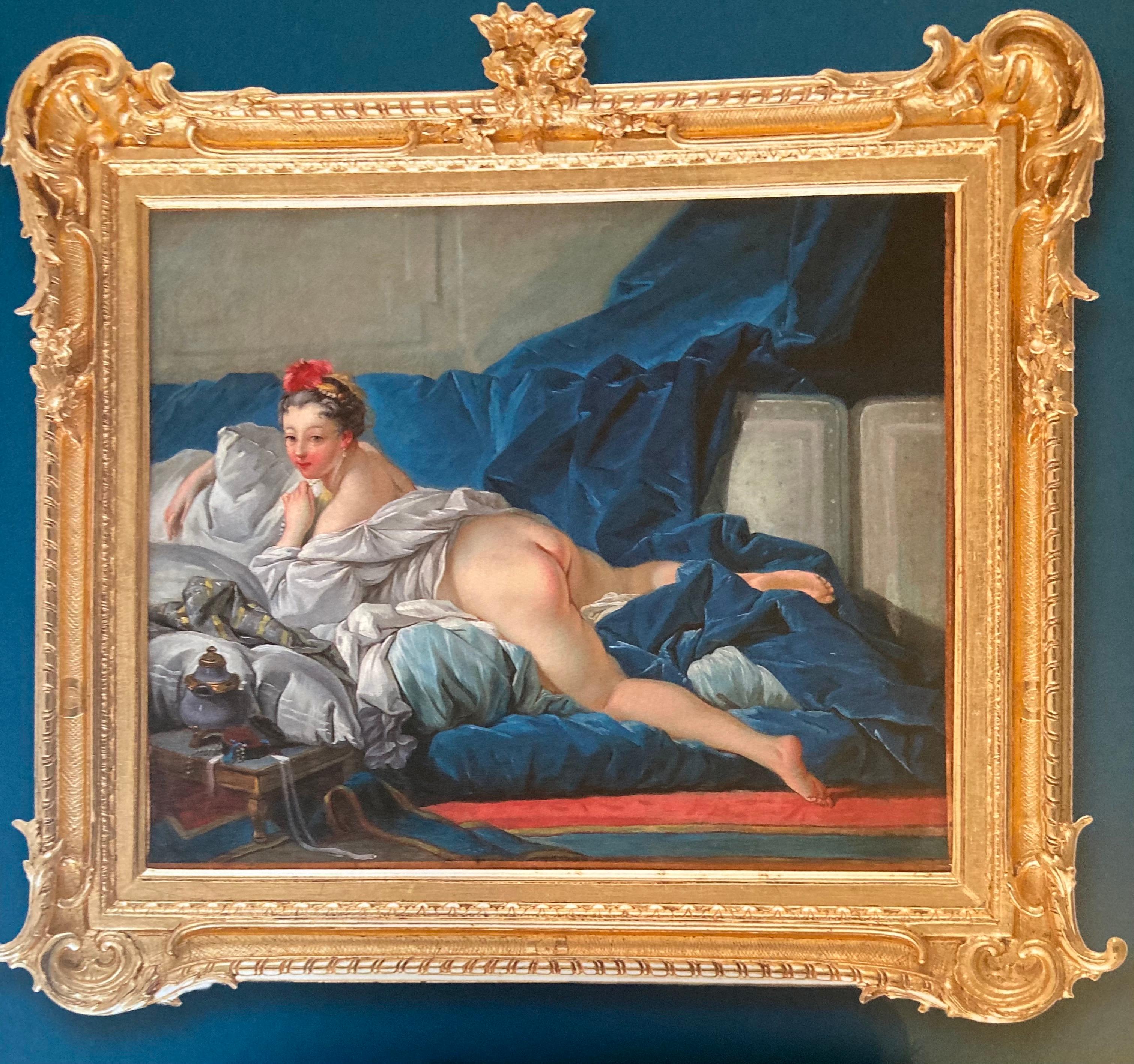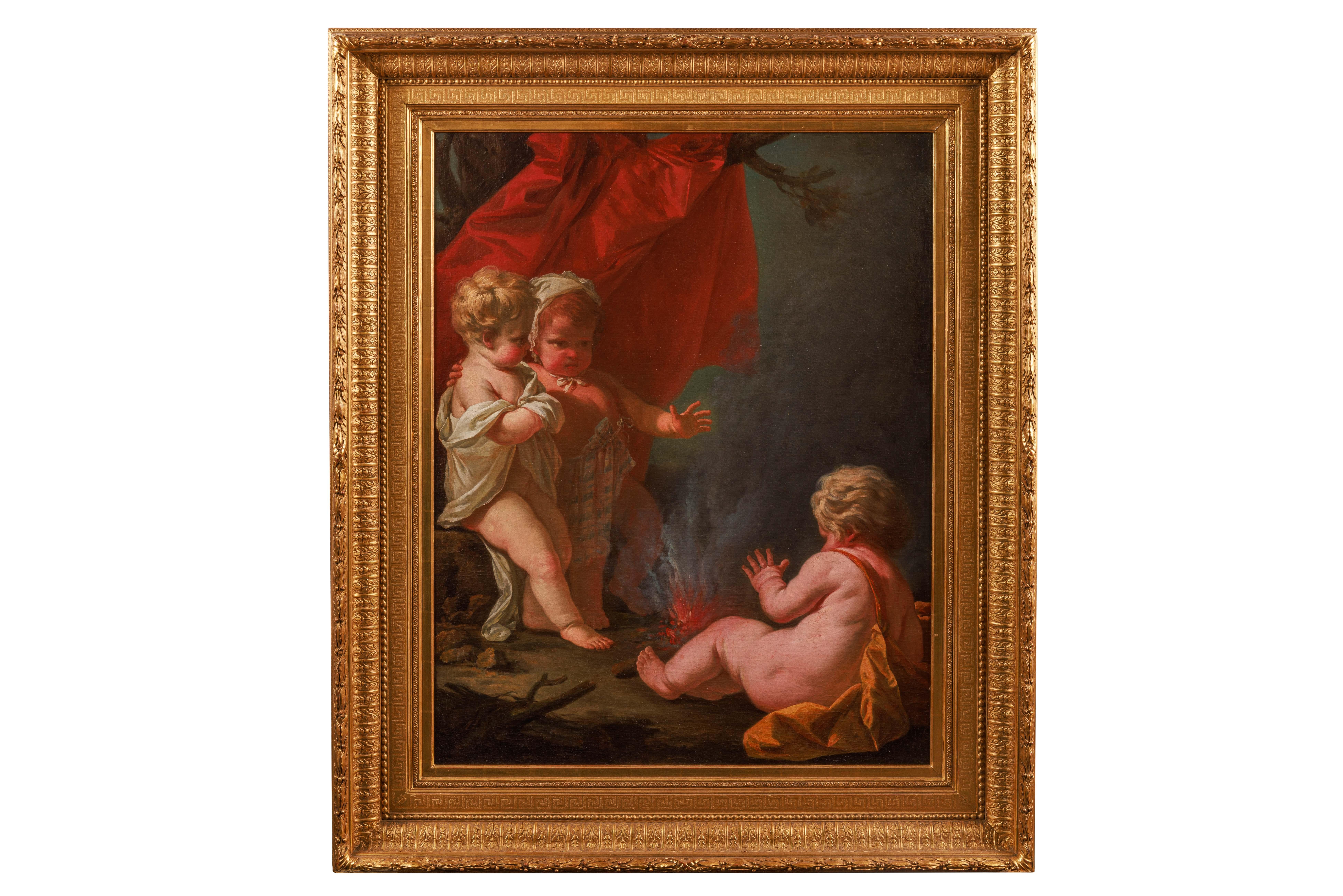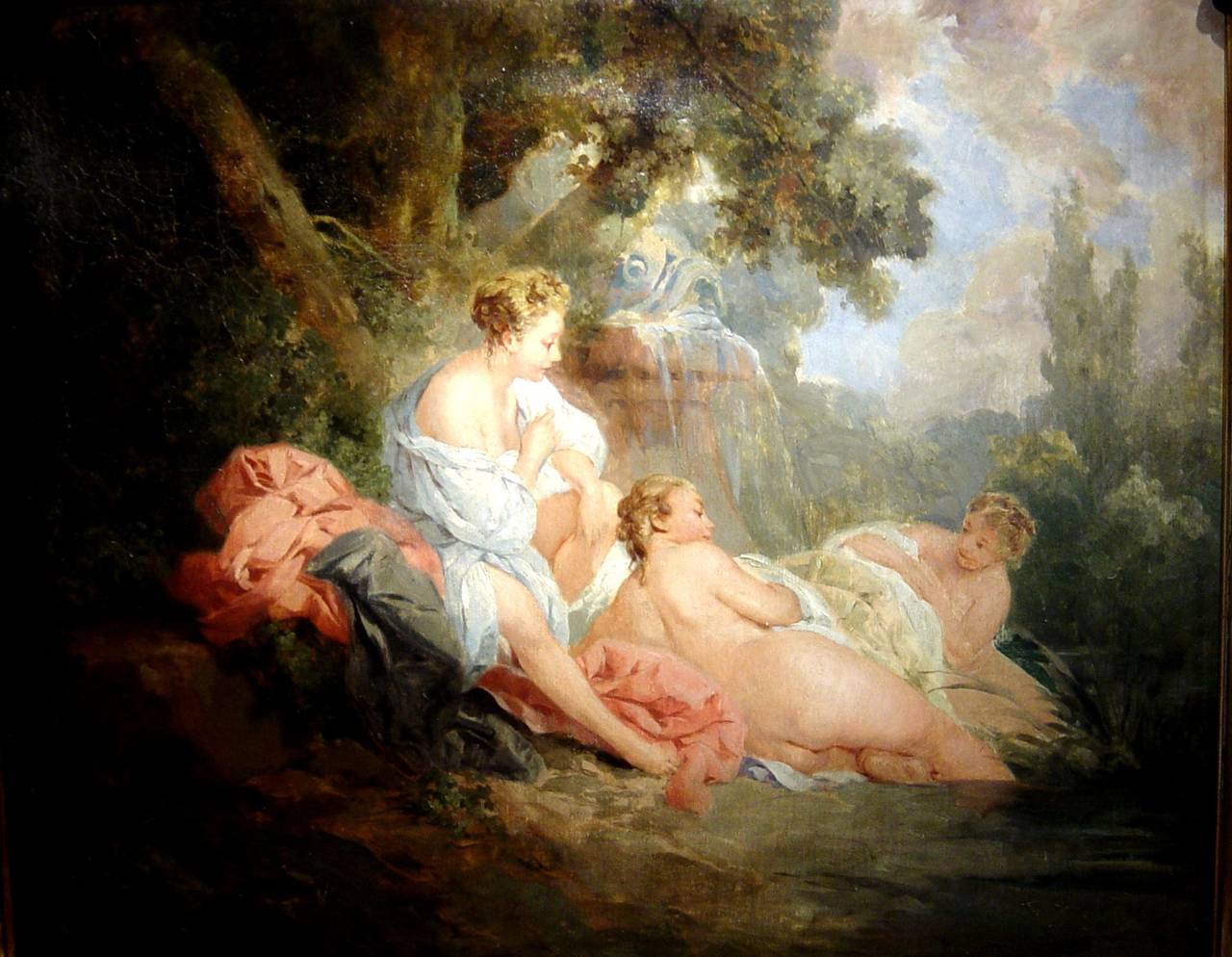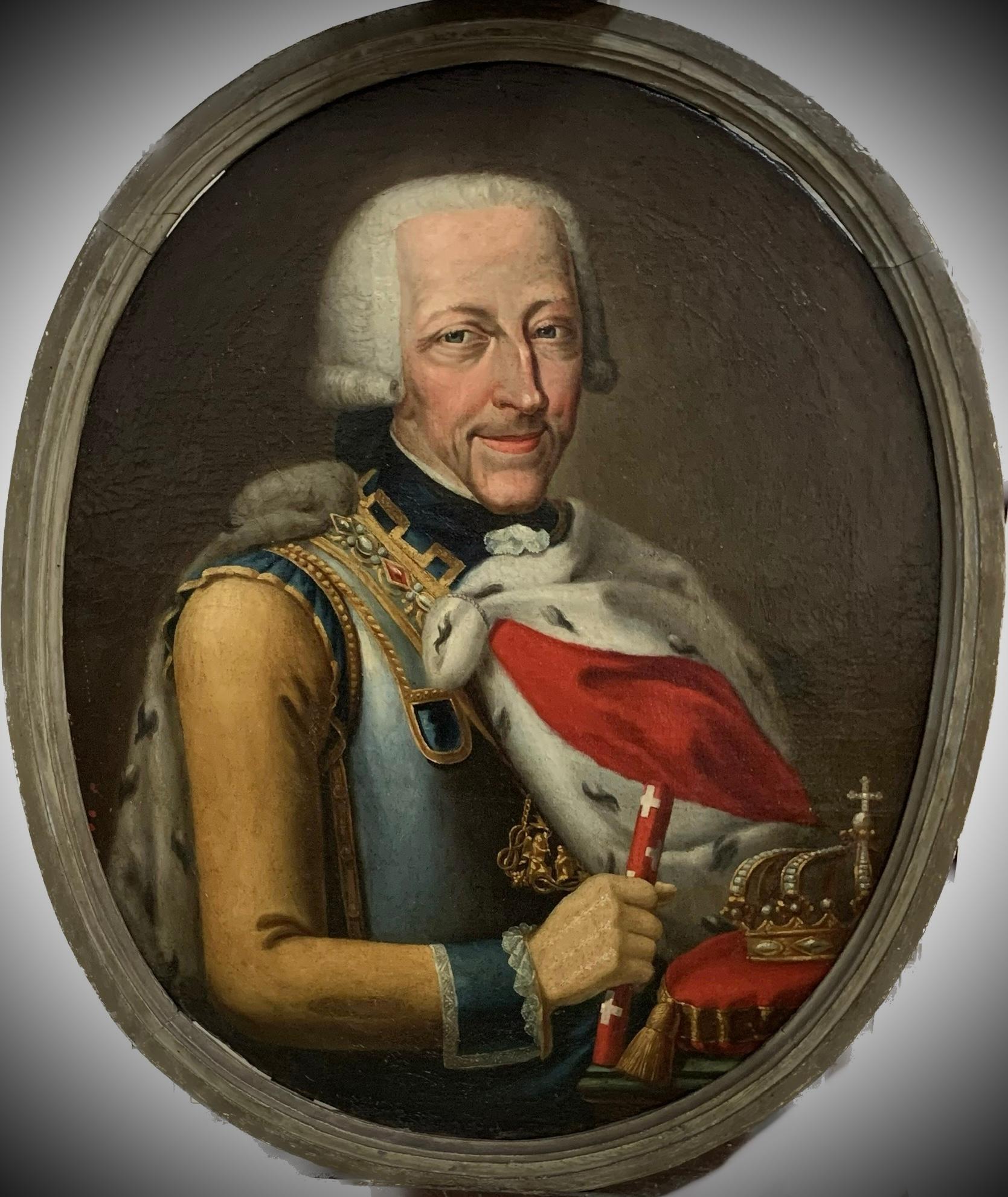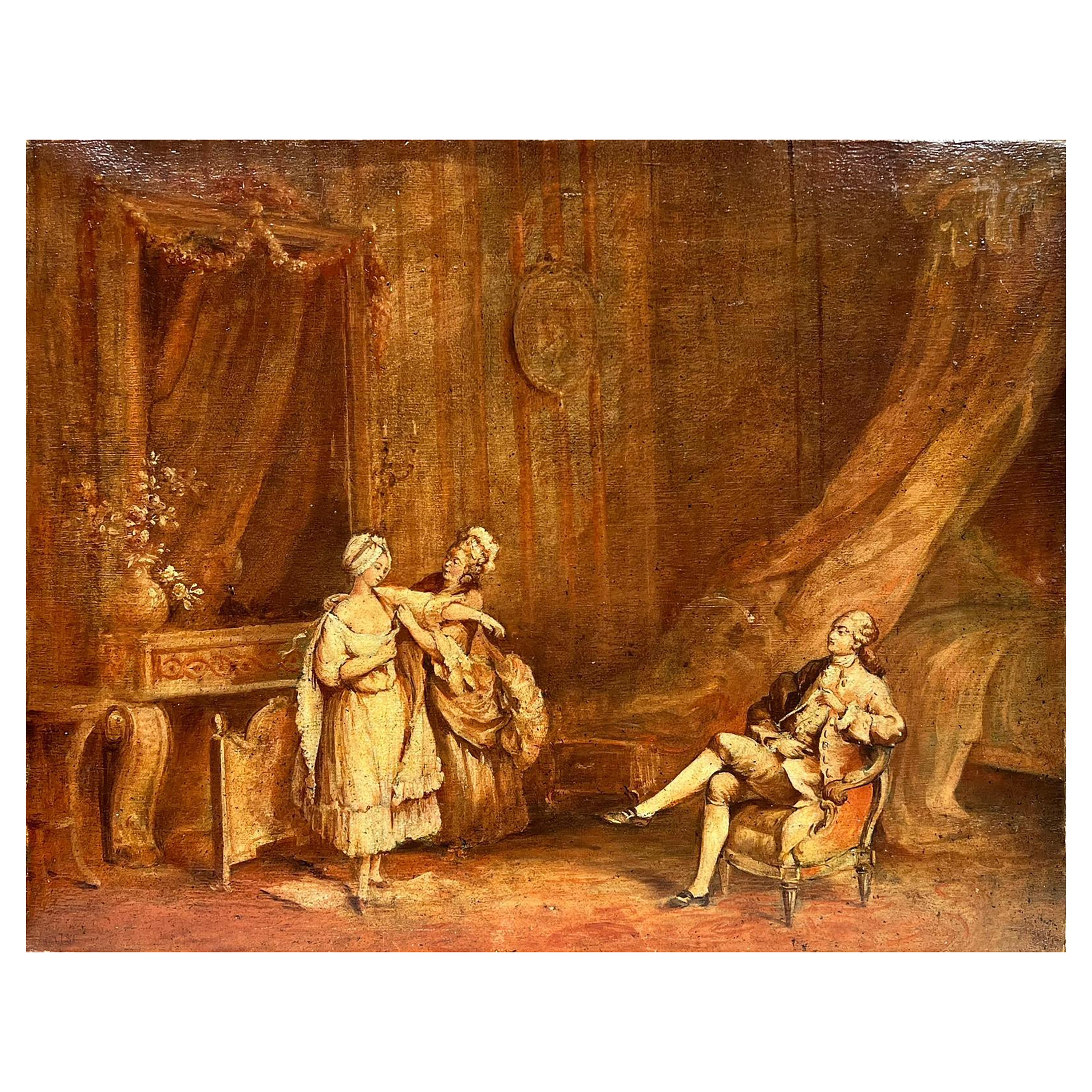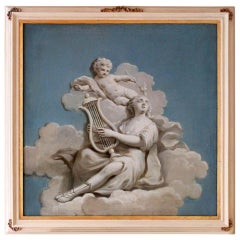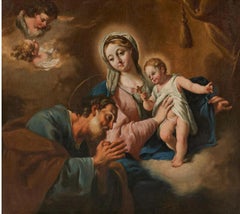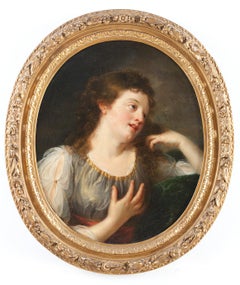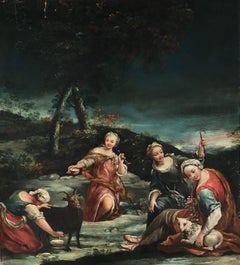
18th Century Rococò Style Italian School Pastoral Scene Oil on Canvas
1 of 14
18th Century Rococò Style Italian School Pastoral Scene Oil on Canvas1700 circa
1700 circa
About the Item
- Creation Year:1700 circa
- Dimensions:Height: 25.99 in (66 cm)Width: 22.84 in (58 cm)Depth: 1.58 in (4 cm)
- Medium:
- Movement & Style:
- Circle Of:Giuseppe Maria Crespi, Lo Spagnuolo (1665 - 1747, Italian)
- Period:
- Condition:
- Gallery Location:roma, IT
- Reference Number:1stDibs: LU148827617272
You May Also Like
- French 19th Century Oil on Canvas Blue and White Music Allegory Cherub PaintingLocated in Firenze, ITThis romantic French 19th century allegoric oil painting on square canvas has a sky blue background, a fluffy cloud fills the central part of the painting where a woman is lying down playing the lyre, while a graceful cherub seems to twirl over her. This oil on canvas painting represents the allegory of music - with a woman dressed in classical clothes and a putto- a very popular theme during all the neoclassical age, with its lively scene inspired by the Rococo period. The composition creates a awesome trompe-l'œil effect thanks to the color palette scheme. Well painted white and gray shadings (chiaro scuro) that stands out from the light blue background in typical grisaille style. This painting originally was an over door frieze...Category
19th Century Rococo Figurative Paintings
MaterialsCanvas, Oil
$2,299 Sale Price30% Off - Giovanni Battista Pittoni, Holy Family with Cupids, Venetian Baroque, ChristmasBy Giovanni Battista PittoniLocated in Greven, DEIn 2001 the German art historian Art historian and Raphael Expert, Prof. Jürg Meyer zur Capellen, published the painting "Die Heilige Familie" in a monographic article, ascribing the present work to the Venetian painter Giovanni Battista Pittoni (1687 -Venice - 1767). (Newspaper "Weltkunst", October 2001, No 12, p. 1850 f. ill.) He describes it as a typical work by this artist. Pittoni was one of the most influential and successful artists of the Venetian Settecento. He was a pupil of the Veronese Master Giovanni Balestra (1666-1740). His style is influenced by Sebastiano Ricci (1659-1734) and Giambattista Tiepolo (1696-1770). Giovanni Battista Pittoni was already successful at a young age and soon lead his own workshop. He created large-scale hitoria paintings, as well as large, religious altarpieces. In addition to Venetian and Upper Italian patrons, Pittoni also had many interested parties from Europe. His work is accordingly scattered in many different museums and private collections today. Pittoni - like other painter colleagues of his time - repeated his own compositions both by hand and with the help of his workshop. He repeatedly incorporated details into other pictures and contexts. Prof. Meyer zur Capellen noted the very good condition of the present work and the high quality of the paint with fine graduations and the vivid brushstrokes. Provenance: The panting has not been on the art market for at least 300 years. In the year 2000 the work was donated by the Münster-based, Noble Family Ketteler zu Harkotten to a private collection in Westphalia. Most probably the canon Nikolaus Hermann von Ketteler zu Harkotten bought the piece in Venice in 1750 together with the altarpiece of the Clemens Church in Münster. On the reverse of the work is a fideicommissum number by Ketteler zu Harkotten. As it belonged to the family commission, the painting was inalienable until 1919, when the corresponding law was repealed, and after that time it remained in the family's possession without interruption. Pittoni's only direct relationship to Münster is the commission for the high altar painting of the Baroque St. Clemens Church. It can be assumed that then canon von Ketteler saw this painting in the artist's workshop during his stay in Venice and acquired it for himself. This would also explain the discrepancy in dating. (ca. 1735/1750). However, it is also possible that the painting originated in the possession of Ferdinand von Plettenberg...Category
Early 18th Century Rococo Figurative Paintings
MaterialsCanvas, Oil
- French School, Portrait of a Young Lady, Actress, Louis XIV sculpted frame, 1700Located in Greven, DEFrench School, Portrait of a Young Lady, perhaps an actress Oval Louis XIV sculpted and gilded frame French Art, Roccoco Art The oval portrait of a young woman measures 61 by 50,5 cm canvas sight size and its 18th century oak carved and gilded frame...Category
18th Century Rococo Portrait Paintings
MaterialsCanvas, Oil
- Rococo Painting, The Brunette Odalisque, Nude Woman, Studio of Francois BoucherBy François BoucherLocated in Greven, DEA voluptuous woman lies prone on a divan, bearing her backside and turning her head flirtatiously to the viewer, though averting her eyes slightly, as if to maintain a coy demeanor. Surrounded by lush fabrics of deep blues, the creamy tones of her skin and dressing gown are thrown in sharp contrast, making the figure glow luminously. The whole painting is ordered by folds - of flesh, of fabric, of cushions, of the rug - inviting the viewer's eye to look closely across the topography of the canvas. One of Boucher's cabinet paintings (that is, paintings made for private collectors rather than official exhibition at the Salon), the open eroticism of this work invites a voyeuristic gaze. Although it was created for a private audience, it was later displayed at the Salon of 1767, where the critic Denis Diderot found it shocking and lascivious. Nonetheless, Boucher would later paint another iteration of this reclining pose, this time using Marie-Louise O'Murphy, a favorite mistress of King Louis XV, as his model, suggesting that the provocative composition was a stock figure for Boucher's private commissions. "The Brunette Odalisque" (French: L'Odalisque or l'Odalisque brune) is a painting of c. 1745 by François Boucher, now in the Louvre in Paris. He later produced two other works in the odalisque genre, both known as "The Blonde Odalisque". The present painting is another version of Bouchers painting which differs in minor details. The quality of the paint is very fine and the whole technique and style allows a dating to c. 1750. As Boucher's Painting was very famous there were several copies and versions which were made by his studio. The present painting can be attributed to the close circle of Boucher. The Painting is framed in a golden frame which was built in the Rococo style in c. 1990. Both the title of Boucher's painting and the objects found in the interior fix the subject as an odalisque, a concubine within the harem of the Ottoman sultan. The sumptuous textiles and exotic, decorative objects suggest early traces of Orientalism, although the figure appears European. Odalisque paintings...Category
18th Century Rococo Nude Paintings
MaterialsCanvas, Oil
- Portrait Johann Theodor Bavaria, Son of Prince Elector, by Joseph Vivien, RococoBy Joseph VivienLocated in Greven, DEPortrait of Johann Theodor of Bavaria (1703-1763) by Joseph Vivien Johann Theodor of Bavaria (* September 3, 1703 in Munich; † January 27, 1763 in Lièg...Category
18th Century Rococo Portrait Paintings
MaterialsCanvas, Oil
- Circle of Jean Honore Fragonard (1732–1806) A Painting of Three Putti and FireBy Jean-Honoré FragonardLocated in New York, NYCircle of Jean Honore Fragonard (French 1732–1806) An Exceptional Painting of Three Putti and Fire, circa 1795. Masterfully painted in the late ...Category
18th Century Rococo Portrait Paintings
MaterialsOil, Cotton Canvas
